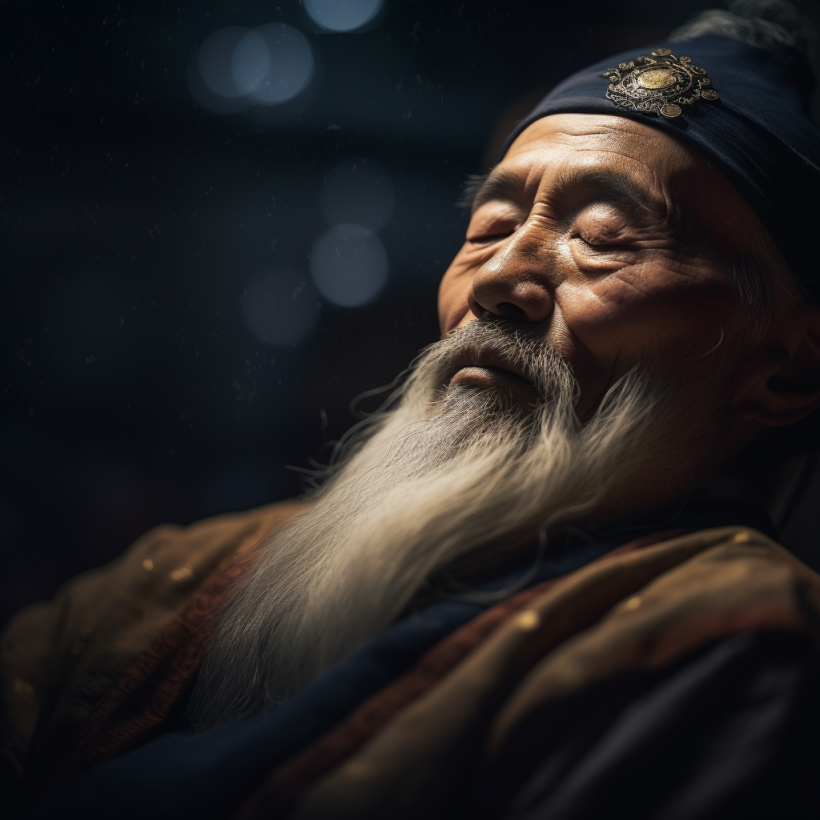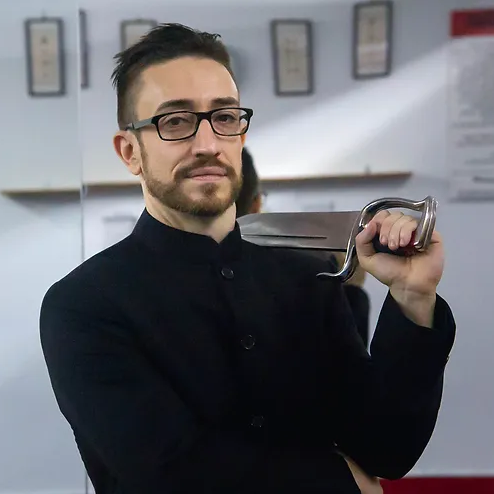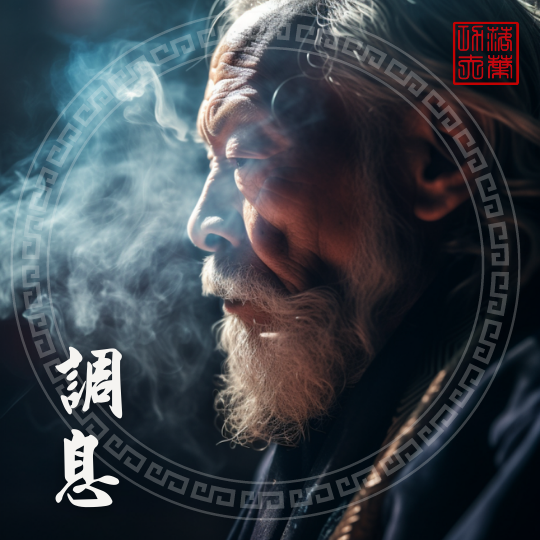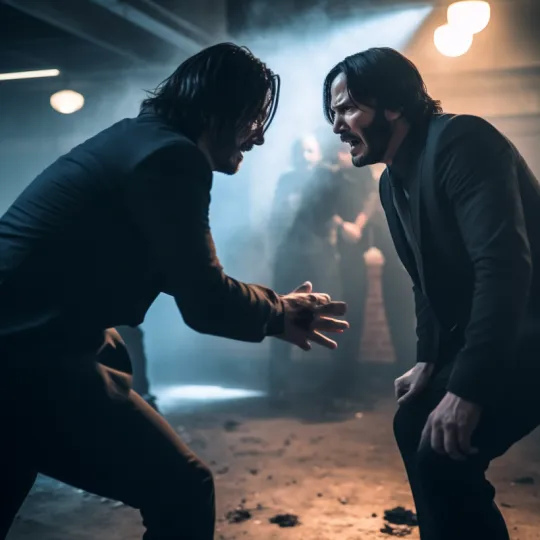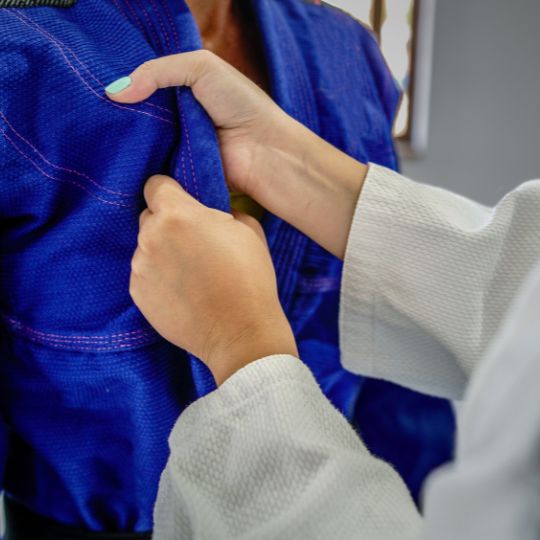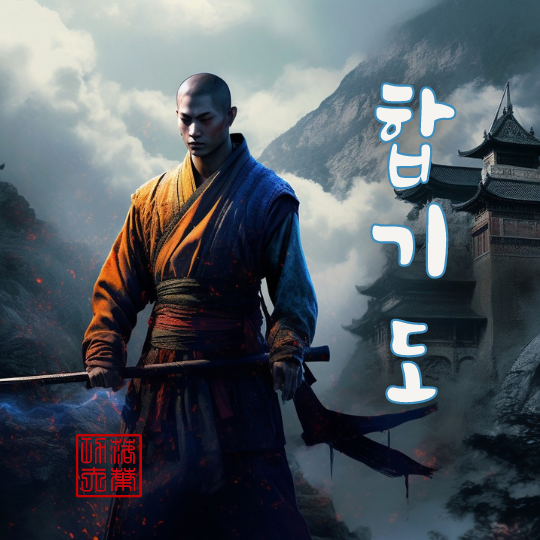
Join us in our conversation with Hapkido master Mike Dunchok, a seventh-dan ranking expert with 34 years of experience. Mike has delved into the secrets of the Old Masters to refine his martial arts practice. In this discussion, Mike shares his journey in martial arts, beginning with his Hapkido training at age 11, and sheds light on this unique Korean martial art’s history, philosophy, and training approach.
Mike explains how the teachings of the Old Masters have played a crucial role in shaping Hapkido and emphasizes the importance of personal development, discipline, and wisdom in martial arts practice. By integrating the insights of these masters, Hapkido transcends mere self-defense techniques and offers a more profound understanding of human movement and self-awareness.
Mike highlights the significance of qigong and meditation in Hapkido, practices that have been passed down from the Old Masters, as essential components for developing fighting intuition, kinesthetics, and overall performance. As we delve into his insights and advice for beginners in martial arts, Mike encourages consistent practice, commitment, and self-reflection to achieve growth and mastery, guided by the wisdom of the masters who came before us.

Read more interviews like this from our list of martial arts.
What Is Hapkido – An Interview With Mike Dunchok
Where Did Hapkido Originate?
Ashe: Mike, can you tell us about your background in martial arts and your experience with Hapkido?
Mike: I began training in Hapkido at the age of 11, and I’ve been teaching for 19 years at my school in Irvine, California, located in Orange County. Hapkido is a Korean martial art with roots in Japanese Jiu-jitsu.
Ashe: Can you give us a brief history of Hapkido as a martial art?
Mike: Hapkido is a Korean martial art that combines elements of self-defense, joint locks, and striking techniques. Its origins can be traced back to the early 20th century when Choi Yong-Sool, the founder of Hapkido, returned to Korea after studying Daito-ryu jiujitsu under Takeda Sokaku in Japan. Choi then combined his learnings with various Korean martial arts and philosophies, creating a new and distinct martial art system. Hapkido’s development was further refined by Choi’s students, including Ji Han-Jae and Kim Moo-Hong, who contributed to its expansion and popularization both in Korea and internationally.
Hapkido Vs. Aikido
Ashe: What is the English translation for Hapkido?
Mike: The three Chinese characters for Hapkido (合氣道) translate to “the way of uniting ki” or “the way of moving with chi.” It’s important to note that Hapkido is not the same lineage as Japanese Aikido, despite sharing similar characters.
What Does Hapkido Focus On?
Ashe: Can you provide an overview of Hapkido’s training approach and curriculum structure?
Mike: While I can’t speak for all Hapkido schools, my particular kwan incorporates Chinese martial arts as well. Generally, Hapkido training includes kicking techniques (chak), forms (Jung sayer), break falls, joint locking techniques (Suki), and blocking and stances (mok). Our blocking is more fluid and circular, like that of praying mantis kung fu, rather than the solid blocking seen in karate-based arts.
What Does Hapkido Teach?
Ashe: How does the training progress for a beginner in your Hapkido school, starting from zero experience?
Mike: When beginners start at our Hapkido school, they join regular classes and participate in group activities. These include stretching, break falls (forward rolls, backward rolls, and falling on the side), partner drills, and kicking drills. After participating in these group activities, beginners are introduced to basic techniques specific to their rank, starting with the grappling portion of our curriculum.
Beginners learn wrist escapes, wrist reversal techniques, Sun Mok, basic ki exercises, and other white belt level curriculum elements. Additionally, they learn etiquette, fighting positions, blocks, and weapon training, starting with single straight stick fencing, which is similar to cane fencing. There are about nine levels of curriculum for them to learn before attaining their first-degree black belt. Our school divides the curriculum into hard and soft material, with five subject areas on the soft side of the art and four on the hard side.
Hapkido Belts
Ashe: What is the Hapkido belt system, and how many dan rankings for the Hapkido black belt are there?
Mike: Our belt system includes white, yellow, orange, purple, green, blue, brown, red, and black belts. The highest dan ranking is 10, but only one person can hold the 10th dan; the founder. The highest attainable rank without being in that position is the 9th dan.
Hapkido Philosophy
Ashe: Can you explain Hapkido’s philosophy, concepts, and principles?
Mike: The philosophy of Hapkido focuses on unified body movement, aiming to execute techniques effectively without relying on strength alone. This concept, called yu won hwa 유원화 in Korean, translates to “flowing circle harmony.” A skilled Hapkido practitioner exhibits a soft and fluid grappling style, becoming more effective when they are relaxed and less focused on generating muscular responses.
Yu Won Hua
유원화 (Yu Won Hwa) is a Korean phrase that can be broken down into three separate parts:
- 유 (Yu) – This character represents “flow” or “flowing” in Korean. It suggests a sense of smooth, continuous motion or fluidity.
- 원 (Won) – This character represents “circle” or “round” in Korean. Circles are often used to symbolize unity, wholeness, or perfection in various cultures, including Korean culture.
- 화 (Hwa) – This character represents “harmony” or “balance” in Korean. It conveys a sense of peace, stability, and balance.
When combined, 유원화 (Yu Won Hwa) represents the concept of “flowing circle harmony.” It could be understood as a harmonious and balanced flow of energy or movement, similar to the idea of the circle of life or the natural cycles of the world. This concept can be found in various aspects of Korean culture. Yu won hua emphasizes the importance of finding balance and harmony in one’s actions, thoughts, and life in general.
The concept shares similarities with Bruce Lee’s famous quote, “Be water, my friend.” Both ideas emphasize the importance of finding balance, harmony, and adaptability in one’s actions and thoughts, drawing from Eastern philosophies like Taoism and Zen Buddhism.
Bruce Lee compared the qualities of water to the ideal state of mind: able to flow, crash, or be still, taking the shape of its container and adjusting to various circumstances.
Both ideas embody the essence of Eastern philosophies, focusing on achieving harmony and balance by embracing change and maintaining a state of fluidity. These concepts inspire us to overcome obstacles and cultivate inner peace by aligning ourselves with the natural rhythms of life.

Hapkido And Taekwondo
Ashe: Why do you think Korean martial arts focus so heavily on kicking?
Mike: It’s difficult to pinpoint an exact reason, but geographical and terrain factors may contribute to the emphasis on kicking in Korean martial arts. Korea is a mountainous region and closer to northern China, where martial arts tend to involve more kicking. There might also be some influence from Northern Chinese Kung Fu. Ultimately, the emphasis on kicking is a characteristic that has developed over time in Korean martial arts.
Ashe: How closely related is Hapkido to Daito-Ryu, and would a Daito-Ryu practitioner recognize the techniques in a Hapkido school?
Mike: Ideally, a Daito-Ryu practitioner should recognize all the techniques in a Hapkido school, and the transition should be seamless. However, some Hapkido schools may have lost or diluted the original concept over time. The best Hapkido schools still preserve the original techniques and principles, eventually aligning with Daito-Ryu’s original method.
What Are The Differences Between Hapkido And Other Martial Arts Like Taekwondo, Karate, Aikido, And Krav Maga?
Ashe: What makes Hapkido unique compared to other martial arts?
Mike: Hapkido’s uniqueness lies in its joint locking techniques and its emphasis on relaxation and emotional detachment during grappling. While Hapkido is a form of jujitsu, it emphasizes an even softer approach. The effectiveness of Hapkido techniques increases when practitioners can be physically and emotionally relaxed, unattached, and spiritually attained. Hapkido can be considered the physical embodiment of Daoism, with its techniques reflecting Daoist philosophy and requiring a release of ego.
Ashe: You think all martial arts paths lead to the same place?
Mike: While different martial arts may have unique characteristics or techniques, at the highest levels, practitioners tend to converge towards a single truth in human movement. Martial arts masters across different disciplines understand the body so well that their movements and techniques begin to look similar. Ultimately, there is a fundamental truth in human movement that transcends the idiosyncrasies of individual martial arts styles.
Hapkido And Aiki
Ashe: Are there specific exercises in Hapkido to develop “aiki” or the “aiki body?”
Mike: In Hapkido, qigong exercises are essential to developing aiki and the aiki body. Practitioners must become proficient in these exercises, which include dan tian breathing, mental relaxation exercises, counting beads for focusing thoughts, the microcosmic orbit, standing like a tree, and grounding exercises. These exercises help practitioners achieve higher levels of skill in Hapkido.
Is Hapkido Legit?
Ashe: What is the most common misconception about Hapkido?
Mike: A common misconception about Hapkido is that soft, yielding movements are ineffective. In reality, these soft movements can capture the momentum of an opponent’s strike, exploiting their commitment of force to turn it against them. These techniques are not only real but highly effective, especially when dealing with multiple attackers, as they allow practitioners to use their opponent’s strength against them.
Advice For Beginners
Choosing A Good School
Ashe: What are some common mistakes beginners make in martial arts?
Mike: Beginners often underestimate the time and effort needed to establish a foundation in martial arts. Consistency and commitment in the initial years are crucial to build basic skills and a solid base. Beginners should train hard and regularly.
When choosing a martial art, consider your goals, motivations, and personal interests. Find a school that teaches techniques honestly, with authenticity, legitimacy, and applicability. Avoid schools that have lost their original inspiration or focus solely on commercial aspects.
Look for a martial arts school that offers personal development, cultivation, and self-improvement elements in addition to physical training. True martial arts should provide confidence in what you’re learning, with applicability behind techniques and forms.
Recognizing A Good School
Ashe: For someone coming in with no experience or reference point in martial arts, what advice would you give them to recognize a good school or teacher?
Mike: It’s true that beginners might struggle to identify legitimate techniques or schools, as they don’t have the background to understand or pressure test them. It’s difficult for me to pinpoint a single element that would help them distinguish between good and bad schools.
Ashe: One recommendation I have is to look at the level of the other students, not just the teacher. If the results are consistent, then the chances are good that it’s worthwhile.
Mike: I am not sure I agree with assessing the teacher’s students; sometimes, even the best teachers may have students who struggle to reach the same level, which makes it hard for beginners to discern the right choice.
Ashe: I think we can also consider the personal development, character building, discipline, and wisdom imparted by the teacher and mirrored in their students. Examine the school’s overall culture, mental and spiritual development, and physical training.
The Power of Qigong For Martial Arts
Ashe: In the context of the 21st century, what do you think provides the biggest return on investment for someone training in martial arts, regardless of their level or style?
Mike: I would say qigong and meditation. They’re often neglected, but they provide incredible benefits when practiced sincerely. Knowing yourself and your body is crucial, particularly in soft martial arts like Hapkido or Jiujitsu. Qigong helps develop that knowledge and improves fighting intuition, kinesthetics, and overall performance. The dividends are beyond reckoning, but unfortunately, few people actually practice it.
Ashe: Right; it’s often the case that what we want and what we need are different things. As my Sifu, Grandmaster Sam Chin, says, “Training is the process of looking into your weakness.” So, focusing on qigong and meditation seems to align with that sentiment. People want to train the stuff that will look cool on Instagram but isn’t necessarily going to help them improve their weaknesses.
The Value of Traditional Martial Arts
Ashe: In modern times, with MMA, firearms, and living in the safest country and period in history, what do you think the value of training in traditional martial arts is?
Mike: If you only train martial arts for the one or two times in your life when you might face a survival or self-defense situation, it’s hard to justify the countless hours of practice. Overemphasis on survivability, practicality, and function can be misplaced. It can’t be the main reason you train. Martial arts is a way to know yourself, and if you apply the confidence and security you develop for that self-defense situation to life in general, you find the real value of martial arts.
Life involves suffering, questioning, doubt, sorrow, and loss. How we face these inevitable situations is determined by our training. Martial arts teach us to move through life gracefully, to face metaphorical challenges to our well-being, and to handle them with skill and grace. Becoming good at physical struggle helps us develop composure and wherewithal to better deal with more abstract struggles.
Time Is Short
Ashe: If you could go back in time and talk to yourself when you were just starting martial arts, what message would you impart to your younger self?
Mike: It might sound cliché, but I would tell myself to train harder. I trained quite hard, but I’m more aware of my mortality and limited time. I’ve devoted over 30 years of my life to martial arts and am content with my progress, but I would’ve devoted even more time, practiced more, and aimed higher. I think many people would say the same, but it’s true.
Mike’s Choices For Best Books
Ashe: What’s the best book on martial arts or a book you’ve gifted most often to martial arts students or friends? It doesn’t necessarily have to be a martial arts book, but one that you think would benefit someone with a dedicated martial arts practice.
Mike: I do give books, and the choice depends on how long I’ve had a student. For my more advanced students, I’ve given certain lesser-known Japanese works, like “Demon Sermon on the Martial Arts” and “The Unfettered Mind.” But for beginners, I start with the Daodejing as it introduces essential concepts in martial arts, especially the soft ones.
Ashe: When you give a beginner the Daodejing, would you provide additional guidance or just hand them a copy and let them explore it themselves? There are many translations, and some are better than others. The closer to the original translation, the more vague the meaning without context.
Mike: You’re right. Although it might not be the most literal or accurate translation, I tend to give them Steven Mitchell’s version, as his background in Zen informs his interpretation, which ties into what I’m teaching them. By the time I’ve given them that book, they’ve experienced how certain techniques work against resistance, and I tie that in with the concepts discussed in the Daodejing.
Connect With Mike
Ashe: So, as we’re wrapping up here, if people want to follow up with you, where can they find out more about you and what you’re doing, and how can they connect with you?
Mike: They can follow me on Instagram, which I imagine is how you found me at Mike Dunchok. I also have a YouTube channel, Master Michael Dunchok Kuk Sool Kwan, which is my Kwan. And if you’re in Orange County, I have my Dojo, Ancient Arts Dojo, in Irvine, South Orange County (https://www.ockoreanmartialarts.com/).
Ashe: Very cool. I want to thank you for your time and for sharing your wealth of knowledge with us. Clearly, you’ve benefited from your martial arts training beyond mere self-defense techniques. It was a real pleasure to connect with you today and listen to your thoughts on martial arts. Before we say goodbye, do you have any last words?
Mike: The most important part is to train hard and consistently.
Conclusion
My enlightening conversation with Hapkido expert Mike Dunchok has provided me with a wealth of knowledge and a deeper understanding of the martial art. I am grateful for the opportunity to learn from Mike’s extensive experience and his dedication to preserving the teachings of the Old Masters.
Mike has illuminated the value of consistent practice and commitment in one’s martial arts journey, as well as the importance of personal development, discipline, and wisdom, which are essential to attaining mastery.
I would like to express my heartfelt gratitude to Mike for sharing his time, expertise, and passion for Hapkido with me. His thoughts have not only broadened my understanding of this unique martial art but have also inspired me to approach my own practice with renewed dedication and mindfulness. As I continue to explore and express myself in martial arts and other disciplines, I will undoubtedly carry the lessons learned from Mike’s experiences and the wisdom of the Old Masters with me, enriching my perspective and shaping my journey towards mastery.
Show Some Love
If you found this article useful, you can support my blog by making a purchase from our Amazon Storefront and help me continue to provide valuable content.
If you’re ready to embark on your own journey of personal growth through martial arts, here are three ways I can help:
- Consider our small group or online martial arts classes to start your practice.
- Explore our other articles to deepen your understanding.
- Book a free discovery call to find out if one of our programs is right for you.

Read More!
- Why Hand-to-Hand Combat Still Matters in the Firearm Era
- What is a Kung Fu Master Called?
- Woman Fight’s Off Her Attacker At The Gym!
- Bruce Lee’s Real Fights: The True Stories Behind the Legend
About the Author

Ashe Higgs, I Liq Chuan Master Instructor & L2 Nutrition Coach
Ashe is a highly skilled martial arts instructor and certified nutrition coach with over two decades of experience in the field. He holds a Master Instructor certification in I Liq Chuan under Sam FS Chin, making him one of only several individuals worldwide to hold the title. He has taught classes and workshops worldwide and is passionate about helping others achieve their fitness and wellness goals.
With a background in full-contact fighting and a Level 2 certification from Precision Nutrition in nutrition coaching, Ashe is a well-rounded expert in the fields of martial arts. In addition to his expertise, he has a wealth of experience in teaching and mentoring others. He has a natural ability to connect with his students and inspire them to reach their full potential.
Disclaimers & Conflicts of Interest
I am not a doctor, and the information provided should not be considered medical advice. The information provided is for educational and informational purposes only and should not be used as a substitute for professional medical advice, diagnosis, or treatment. Consult your doctor or a qualified healthcare professional before making any changes to your diet, exercise routine, or lifestyle.
Please note that some of the links provided in this content may be affiliate links, meaning that I may receive a small commission if you purchase through them. However, please rest assured that any products or services recommended are based on my personal experience and belief in their value. I only recommend products or services that I have personally used and believe in.






